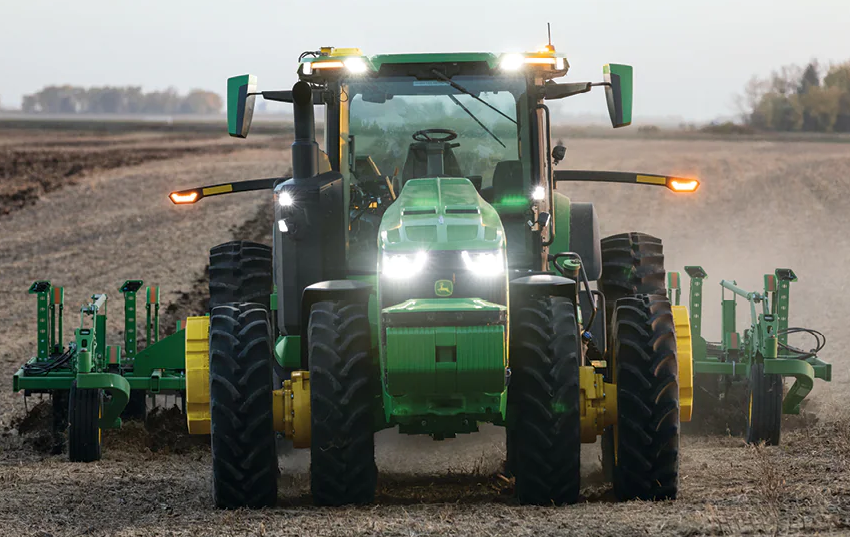
John Deere recently unveiled an autonomous tractor capable of tilling soil without a farmer behind the wheel. Along with its precision planting and spraying technology, John Deere is aiming to make autonomous vehicles and automated planting and spraying available to help customers plant, manage and harvest more crops with fewer seeds, pesticides and people.
At the most recent CES show in Las Vegas, Deere & Company unveiled its autonomous tractor. Farmers will drive the tractor into a geofenced field, after which they will be able to toggle a switch on a mobile app, and the tractor will go until it runs out of diesel fuel, which is about 10 hours. Deere & Company is expecting to make the autonomous tractor available in the fall of this year.
At first it will be a new tractor for purchase that will only be able to till the fields. Future iterations planned include retrofitting older tractors and performing other tasks, such as planting and harvesting. The company is still developing a sales model for the product. In addition to the cost of the tractor and autonomous systems, customers may pay a monthly subscription rate or a fee per acre tilled. Deere says the tractor will be able to till 325 acres in 24 hours.
For computer vision, the tractor is equipped with six pairs of stereo, high dynamic range (HDR) cameras for a 360-degree view that uses HDR to capture images in many levels of brightness and light. In addition to guiding the autonomous tractor, the cameras will allow farmers to see what the tractor sees. For localization, each tractor has two GPS sensors along with IMUs and wheel encoders. All together, the company says the perception and localization technology allow the tractor to drive within an accuracy of one inch of its stated coordinates. Also onboard the tractor are NVIDIA-based edge processing servers.
During field testing, the tractor collected more than 50 million images from different types of fields in many locations. Its machine learning (ML) model is fed with hundreds of thousands of images to detect objects that might cause the tractor to stop and alert the farmer to a potential obstruction. They can then decide to either continue driving, stop to fix the issue or navigate around the obstacle (such as a fallen tree branch). The more tractors in operation, the more images that can be fed into the ML model to improve it. Deere is an AWS shop for compute, storage and training. It has also been using Google Facets, an open source visualization tool for ML models.
The company did not name any customers, but says that demand is already high.
Want insights on emerging technology trends delivered to your inbox? Join the 451 Alliance.

